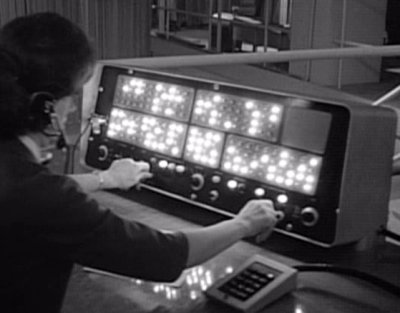The fact is, we've always made our objects special. Take, for example the very first cast iron bridge ever built, called, not surprisingly, the Iron Bridge. Built upon the river Severn in Jolly Olde, near Shropshire. It contains no welds, no rivets. All the parts are fastened together with blind dovetail or mortice and tenon joints, as if it were a piece of furniture. And a fine piece of iron cabinet making it is. You can see that there is an artistic quality in the bridge that was wholly unnecessary.
There are design movements, primarily coming from the scifi geek side of the realm, that strive to incorporate artisanal elements into product, and do so by drawing from tradition. One such movement, called Steampunk, has received attention from even the general public. Steampunk draws inspiration from the Victorian period of industrialization, say, from 1860-1900 or thereabouts. To treble up on the geek factor, here is a steampunk rendition of Star Wars figurines:
Steampunk, obviously, envisions objects and people as if today's (or the future's) current technologies existed back in the day of Jules Verne. Polished brass, well-oiled leathers, finely finished rare and tropical woods, matte grey surfaces of wrought or cast iron would dominate the look of things.
Here's a steampunk lap top:

 Another movement is called Dieselpunk, and harkens back to the era of perhaps 1920-1945. If Steampunk is retro futuristic, then Dieselpunk has been called futuristic retro. The idea being that things in the future, utilizing a early mid 20th century aesthetic, would look like this. Of course, that's wrong. Dieselpunk is Steampunk, just evoking a different desing era. I've really found no good dieselpunk images that are as charming as stemapunk, but think Terry Gilliam. I would say Terry's Brazil has not only got dieselpunk down pat, he invented it.
Another movement is called Dieselpunk, and harkens back to the era of perhaps 1920-1945. If Steampunk is retro futuristic, then Dieselpunk has been called futuristic retro. The idea being that things in the future, utilizing a early mid 20th century aesthetic, would look like this. Of course, that's wrong. Dieselpunk is Steampunk, just evoking a different desing era. I've really found no good dieselpunk images that are as charming as stemapunk, but think Terry Gilliam. I would say Terry's Brazil has not only got dieselpunk down pat, he invented it.The world is one of a combination of both exposed and hidden infrastructure, depending upon whether the inner workings are considered "elegant' ro not. Throw in a judicious use of Orwellian packaging, and you are on your way. In fact, the 1920s and onward was the start of the era when packaging was more important than the actual product. Add in one further introduction to desing, known as the "kludge" which is a modification used to fix and obvious problem, which in turn becomes a feature. In other words, a bandaid is foisted off as a attractive enhancement.
Or 12 Monkeys. You get the idea:
Well, might as well keep going forward. The next stage doesn't have a name as far as I know, so I'll give it one. Rocketpunk. Design from 1945-1970 or so.
I chose the end point of 1970, because after that you start to see touch sensitive buttons and LED indicators. Analog clock dials and chunky pushbuttons start to disappear. If you grew up with me, a boomer baby, through the late 50s and the decade of the 60s, you know exactly what I mean. Any scifi movie or TV show, and spy film is Rocketpunk. Computers with lots of flashing lights and tape reels on them. Star Trek. Lost In Space. That's all rocketpunk.
What's next? Electropunk from, say, 1970-1985 or 90? Well, that's a music genre. I don't know.






I love that scene when you see men and women try and look methodical in punching the keys.buttons to the lights..as if they were doing key punch data entry...women with such sculptured nails too
ReplyDelete